Blush Centaury-thistle,
Hebrew: דרדר גדול-פרחים, Arabic: القنطريون التمساحي
| Scientific name: | Centaurea crocodylium L. | |
| Synonym name: | Centaurea heterocarpa Boiss. | |
| Common name: | Blush Centaury-thistle | |
| Hebrew name: | דרדר גדול-פרחים | |
| Arabic name: | القنطريون التمساحي | |
| Plant Family: | Compositae / Asteraceae, מורכבים |
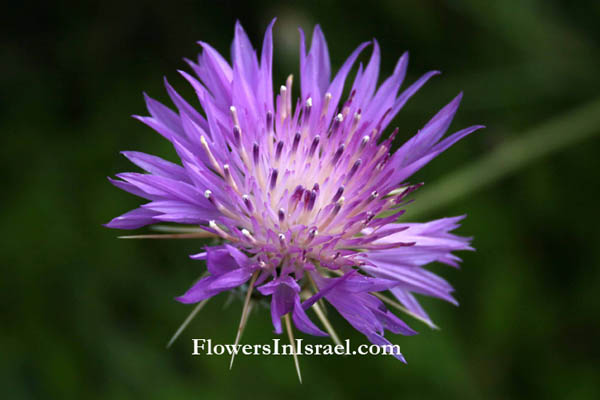
|
| Life form: | Annual | |
| Spinescence: | Bracts | |
| Stems: | 45cm high; erect, sparingly branched | |
| Leaves: | Alternate, rosette, dissected once, dentate or serrate | |
| Flowers: | Pink | |
| Fruits / pods: | Hairy cypselae | |
| Flowering Period: | May, June | |
| Habitat: | Batha, Phrygana | |
| Distribution: | Mediterranean Woodlands and Shrublands, Montane vegetation of Mt. Hermon | |
| Chorotype: | Mediterranean | |
| Summer shedding: | Ephemeral |
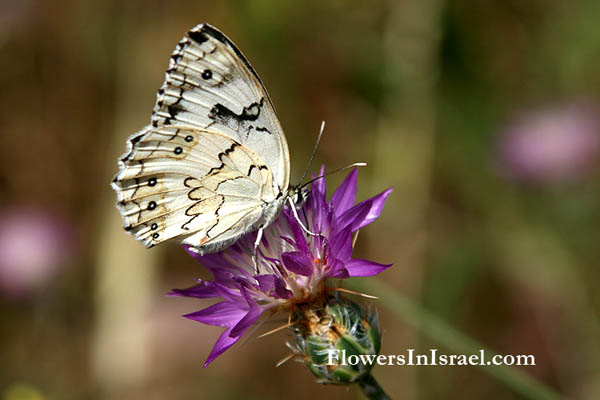
Derivation of the botanical name: Centaurea, gets its name from the centaur, Chiron, who is said in mythology to have taught us the healing power of herbs. crocodylium, kroko,pebble; deilos, worm, or man, pebble-worm. heterocarpa, diversely fruited. The Hebrew name: דרדר, dardar, from Aramaic: דרדרא, dardara; Arabic: דרדאר, darda'ar. (Gen. 3:18, Hos. 10:8). In modern Arabic shauket el-dardar is applied to the star thistles or knapweeds.
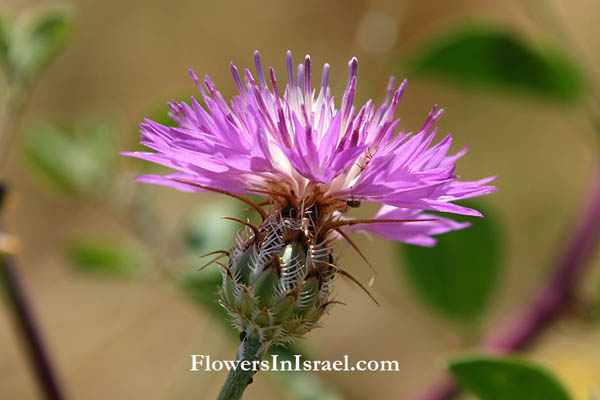
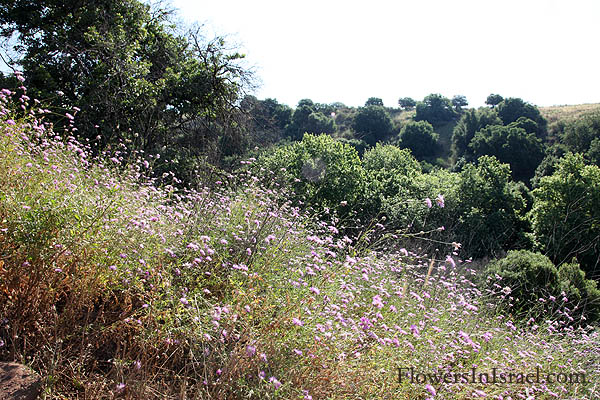
Location: Golan, Banias 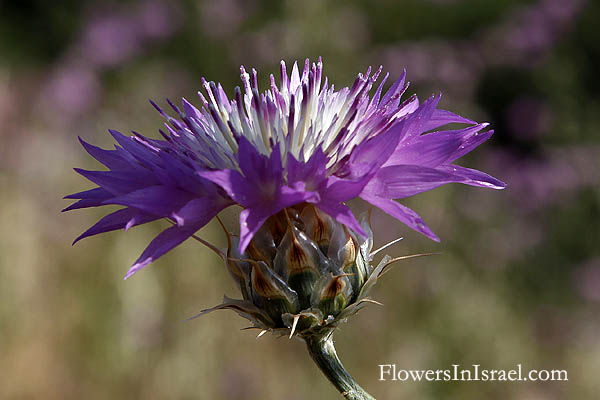
Location: Golan, Banias |